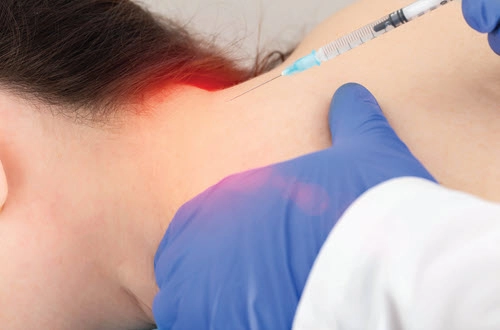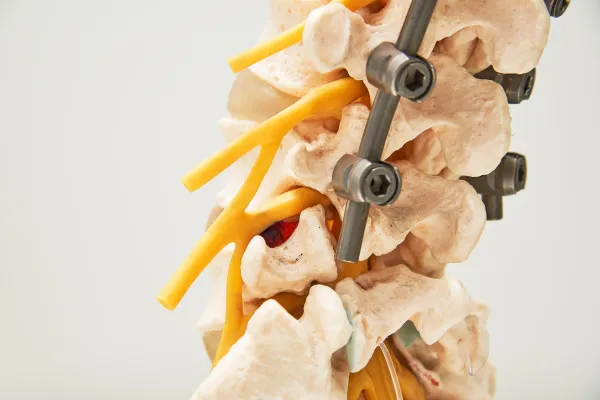Neurosurgery Coding Alert
Get Your Nerve (Knowledge) Up for These Injection Claims
Here’s why you need to know the difference between trigeminal and greater occipital nerves. When your provider performs a nerve injection, it’s up to you to differentiate between the services to code correctly—and to choose the right ICD-10 code to prove medical necessity. Two nerve injections that your provider might perform involve the trigeminal and greater occipital nerves. Providers use the shots to relieve pain from any number of symptoms. No worries: To get the scoop on coding these nerve injections, we talked to Judith L Blaszczyk RN, CPC, ACS-PM, ICDCT-CM, compliance auditor at ACE, Inc. in Overland Park, Kansas. Here’s what she had to say. Ride 64400 to Trigeminal Nerve Shot Success If encounter notes indicate that the patient received a trigeminal nerve injection, report 64400 (Injection(s), anesthetic agent(s) and/or steroid; trigeminal nerve, each branch (ie, ophthalmic, maxillary, mandibular)), Blaszczyk reports. “The trigeminal nerve is one of the 12 cranial nerves and provides sensation to the face as well as various facial muscular functions such as chewing. The nerve runs from the skull, branching into three divisions that supply feeling to the forehead [ophthalmic], the cheek [maxillary], and the lower jaw [mandibular],” she says. For pain relief, a branch of the trigeminal nerve is injected with a combination of local anesthetic and steroid. Dx List Includes Trigeminal Neuralgia Patients who need a 64400 service often suffer from, appropriately enough, trigeminal neuralgia. “Trigeminal neuralgia, also called tic douloureux, is a nerve disorder that frequently causes shooting pain to one side of the face in one or any combination of the three areas mentioned above,” explains Blaszczyk. “The pain attacks can occur on both sides of the face but not at the same time, and they typically worsen over time, occurring more frequently. Minor stimulation, such as a slight breeze or touching the cheek could precipitate an attack.” The ICD-10 code you’ll report for trigeminal neuralgia is G50.0 (Trigeminal neuralgia). Another condition that lends itself to 64400 service is herpes zoster (or shingles), which is “caused by a latent chickenpox virus in the patient, that due to age, an underlying disease process, an acute illness or other stressor may then reactivate, causing a variety of neurologic manifestations,” says Blaszczyk. Sometimes, the attack is acute; when this occurs, code the shingles with B02.9 (Zoster without complications). Other times, “the pain from the acute attack may be long-lasting and is called post-herpetic trigeminal neuralgia,” says Blaszczyk. When this occurs, code the shingles with B02.22 (Postherpetic trigeminal neuralgia). Note: These are only examples of patient conditions that might warrant a trigeminal nerve injection. You should always code to the notes and choose the appropriate codes based on the encounter form. Don’t be surprised, however, if you see one of the above conditions manifest itself in a patient that requires a trigeminal nerve injection. Check Out This 64400 Example From Blaszczyk: Procedure description: Patient suffers from trigeminal neuralgia. The patient is placed in a supine position with the head in a neutral position and the eyes staring straight ahead. A point 2-3 cm lateral to the angle of the mouth on the side to be blocked — is marked. The skin over the cheek on the involved side is prepped and draped. A local anesthetic is injected into the site. Then a 22-gauge 10-cm long spinal needle is inserted and advanced upward toward the mandibular condyle and toward the external ear. At a depth of 4-6 cm, the greater wing of the sphenoid at the base of the skull is contacted. The needle is withdrawn and redirected more posteriorly so as to enter the foramen ovale. It is then advanced 1-1.5 cm. Paresthesia at the mandible is elicited, followed by paresthesia in the maxilla and orbit. Once these signs have been obtained, the medication is injected. For this encounter, you’ll report 64400 for the injection with G50.0 appended to represent the patient’s trigeminal neuralgia. GON Shots Strike at Another Nerve Another common nerve injection that your provider might perform is a greater occipital nerve (GON) injection, which you’d report with 64405 (… greater occipital nerve). “The back of the head and the most upper part of the neck would be considered the anatomical locations involved with the greater and lesser occipital nerves. The greater occipital nerve supplies sensation to the skin over the posterior skull, including the occiput and temporal areas, and to the vertex and ear,” explains Blaszczyk. GON Shot Often Treats Occipital Neuralgia Pain in the GON is occipital neuralgia, which you’d report with M54.81 (Occipital neuralgia). This diagnosis will likely be a consideration with some GON injection patients. “Occipital neuralgia is characterized as persistent pain at the base of the skull with occasional sudden shock-like paresthesias in the distribution of the greater and lesser occipital nerves. The area is typically also tender to palpation and may be associated with trigger points in the same area,” explains Blaszczyk. Your provider might also use GON shots to treat other headache syndromes, including: Note: These are only examples of patient conditions that might warrant a GON injection. You should always code to the notes and choose the appropriate codes based on the encounter form. Don’t be surprised, however, if you see one of the above conditions manifest itself in a patient that requires GON injection. Consider This 64405 Example From Blaszczyk: Patient suffers from occipital neuralgia. The patient is laying down. The skin and hair of the back of the head are cleaned with antiseptic solution. The provider palpates and finds the pulsation of the occipital artery, and the patient feels the pain in the GON area. A 5/8 inch, 25 G needle is directed at 90 degrees toward the base of the skull until a bone is contacted. Aspiration is performed to prevent intravascular injection. A mixture of local anesthetic and steroid is used and approximately 1.0 cc is injected around the nerve and an additional 1.0 cc on either side of the nerve. For this encounter, you’ll report 64405 for the GON injection with M54.81 appended to represent the patient’s occipital neuralgia.

Related Articles
Neurosurgery Coding Alert
- Surgery Coding:
Listen to Experts on Stereotactic Cranial Radiosurgery
Alternative to more invasive surgery has trio of key of add-ons. When your surgeon performs [...] - Injections:
Get Your Nerve (Knowledge) Up for These Injection Claims
Here’s why you need to know the difference between trigeminal and greater occipital nerves. When [...] - E/M Coding:
Max Out Claims by Knowing Non-Face-to-Face Time
Know how to capture work that occurs beyond the patient encounter. Every coder knows how [...] - You Be the Coder:
Nail Anatomy Question on PET Scan
Question: Notes indicate our provider performed ‘PET scan, whole body.’ I reported 78811 and 78812 and [...] - Reader Questions:
Parse Spinal Canal MRIs by Anatomy
Question: Encounter notes indicate that the provider performed the following: “MRI cerv. spinal canal w/contrast …MRI [...] - Reader Questions:
Dive Deep Into Notes for Skull Fracture Fix Code
Question: The surgeon performed elevation of a depressed skull fracture. How should I report this surgery? [...] - Reader Questions:
Arnold-Chiari = Encephalocele
Question: Encounter notes indicate that a patient suffered from “arnold chiari type 3.” How should I [...]




